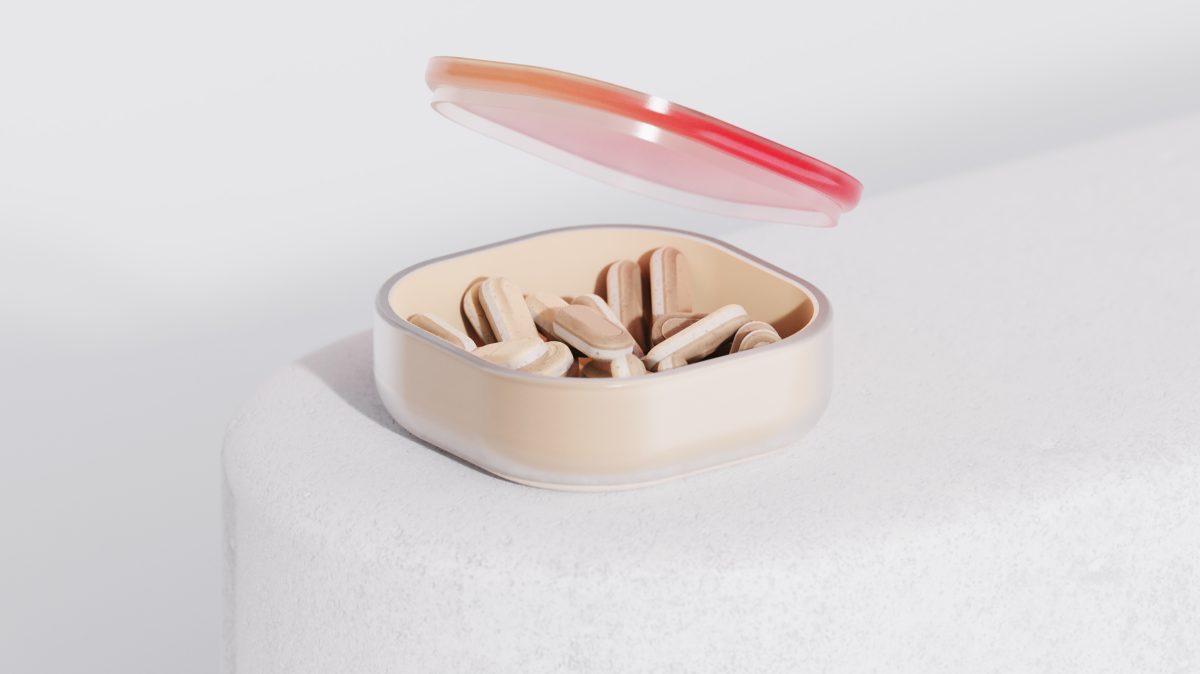MediaCat Exec. Editor Mike Piggot chats with Morrama‘s Founder and Creative Director Jo Barnard about Luma, the menopause management subscription service that implements AI technologies to understand users’ symptoms and personal needs, and connects to tailored 3D-printed supplements.
Hi Jo. The last time we spoke it was about sex toys and sexual wellness. This time it’s the menopause. What was the motivation behind Luma and why did you decide to focus on this? You’ve spoken about it being a neglected area for women, right?

We’ve been looking into typically underserved markets as part of Morrama Labs. Women going through the menopause get little attention and there are a lot of talented women 45+ leaving the workplace as they struggle to deal with the symptoms.
In the UK, the main recommended treatment for menopause is HRT, however, there are women who cannot, or choose not to take hormones and so we envisaged Luma as an alternative. Primarily though, it’s about starting conversations about this typically overlooked issue that affects at least 50% of the population.
Luma is the first product of its kind in the market. What was the biggest challenge with this project and did your goals and aims change throughout the process, or did you have a clear idea of what you wanted to achieve from the outset?
At the moment, Luma is in the concept stage. It’s a proposition, an indication of where the menopause management market could go. The goal is for us to begin the conversation, see the appetite and validate the need. If the response is really positive, we will concentrate our efforts in developing it and, maybe one day, making it a reality.
Subscription services seem to be the thing these days. Was it challenging nailing this part of the offering?
Subscription services are primarily a thing because they are good businesses. However, from a user perspective, there is a lot of reassurance in knowing something is taken care of and will arrive each month without effort. Something you consume daily is pretty easy to tailor a subscription for.

How does the AI aspect work? Was AI always part of the plan?
By capturing things like heart rate and temperature via a wearable (e.g. an Apple Watch), the app can know if the user has had a particularly tough day and prompt questions to probe a bit deeper into anything that may have triggered the symptoms. This data capture helps build up a much broader picture of a woman’s journey and will help a brand identify patterns that can help unlock new ways of managing the menopause. We’d also imagine a community element to the app that would enable users to share their stories with others experiencing the same thing.
Was 3D printing always part of the plan? If so, why?
3D-printing things like supplements works in a similar way to printing a plastic part. The ingredients would be combined with a carrier that can be extruded into layers. Different ingredients can therefore be layered up according to the ratio required.
Printing is certainly not the only option here, but the on-demand manufacturing method is really suited to small batch production, enabling a company to start small with a select user group and scale organically rather than committing to orders of 5000+ pills at a time.

What was the process behind the product design?
The design you see here is merely a method of communication. It’s been stripped back to the essentials for the purpose of storytelling. The choice of colour palette and aesthetic detailing has been driven by material choices key to the story — the plastic-free pill packet for example, and the form is minimal because it doesn’t need to be anything else. The idea here is that if a brand out there is working in this space, there may be an opportunity for collaboration or partnership which would ultimately mean the design will change anyway.

How do alternative medicines come into play? THC was mentioned.
An increasing number of studies are coming out showing clear evidence that THC provides significant relief for symptoms of menopause, particularly hot flashes, so this is suggested as a core ingredient. Lion’s Mane is a mushroom that is showing benefits in managing ADHD and protecting against dementia; it helps with brain function, particularly alertness and focus. Ginseng has been used for centuries to improve libido and Black Cohosh is a plant ingredient that is used as a herbal remedy for oestrogen-related conditions. This is by no means an exhaustive list, but these are ingredients already being used and promoted for menopause management. Our innovation is on tailoring them safely and specifically to the individual woman.
Are we likely to see a lot more CBD and possibly THC products within wellness in the coming months and years?
For sure. The nature-derived supplement and medication markets are only going to grow in the coming years. In the UK the mushroom market is exploding with teas, powders and smoothie blends for anxiety relief, focus and energy. Next up will be psilocybin, if not for mainstream wellbeing then for the medical treatment and therapy use.
What are you working on next?
We’ve got an exciting project in the pipeline looking at the future of self, with a particular focus on health and fitness. Watch this space!
[Q&A with Jo Barnard: designing sex toys and sexual wellness products]
Featured image: Luma / Morrama

































